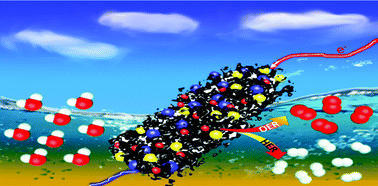FexNiy/CeO2 loaded on N-doped nanocarbon as an advanced bifunctional electrocatalyst for the overall water splitting†
Abstract
Developing a highly efficient and cost-effective electrocatalyst for catalyzing the hydrogen evolution reaction (HER) and oxygen evolution reaction (OER) is fundamentally important for the practical application of the overall water splitting technique. Herein, a bifunctional electrocatalyst constituted by FexNiy and CeO2 nanoparticles supported on the N-doped nanocarbon (NC) is fabricated by a simple one-pot pyrolysis of the homogeneous mixture of Fe, Ni, Ce nitrates and melamine. The synergistic effect of each component in the FexNiy/CeO2/NC gives rise to outstanding electrocatalytic activities and stability toward the HER and OER. For hydrogen evolution, the FexNiy/CeO2/NC shows a smaller overpotential of 260 mV to achieve a current density of 50 mA cm−2 in a 1 M KOH electrolyte. More significantly, a small overpotential of 240 mV for FexNiy/CeO2/NC affords an oxygen evolution current density of 10 mA cm−2, far lower than that of the benchmark IrO2. The practicability and electrocatalytic activity of the prepared FexNiy/CeO2/NC under practical operation conditions are also investigated. In particular, the FexNiy/CeO2/NC-based overall water splitting cell only needs a cell voltage of 1.70 V to output 10 mA cm−2 in alkaline electrolytes, comparable to that of the IrO2∥Pt/C cell. The present study may pioneer a new avenue for developing novel bifunctional electrocatalysts with high-performance and low cost for water splitting.



 Please wait while we load your content...
Please wait while we load your content...